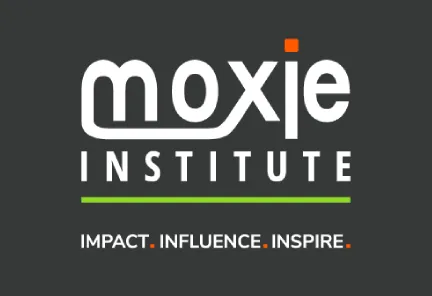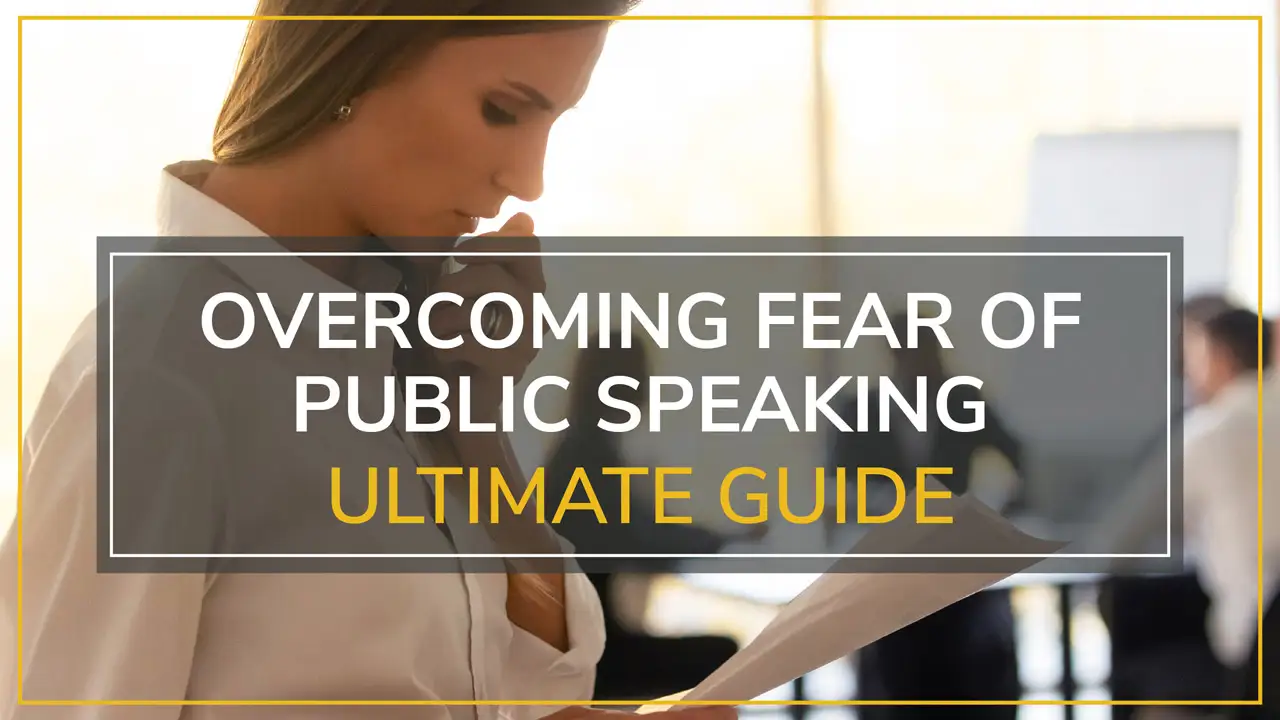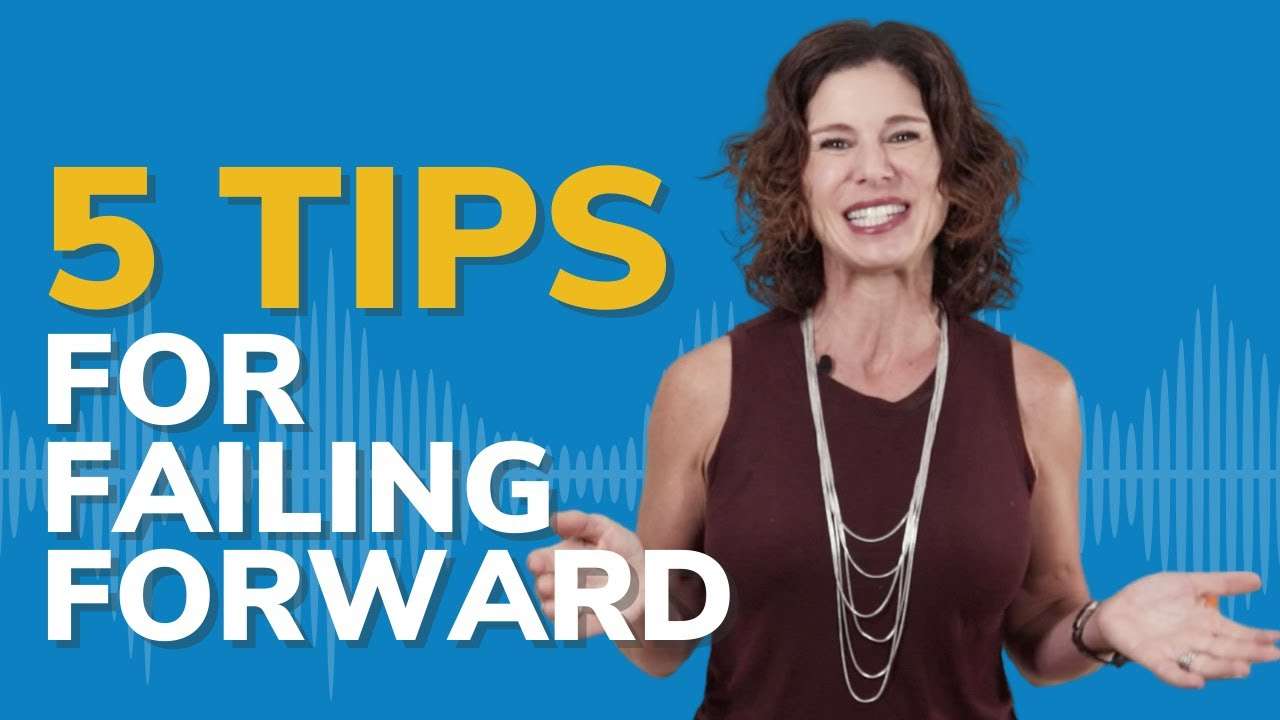Introduction: The Perfectionism Trap That Fuels Speech Anxiety
Picture this scenario: You’ve been invited to present at an upcoming board meeting next month, and instead of being excited by the opportunity, you’re working on excuses to get out of it. Sound familiar? You’re not the only one struggling with this. In fact, according to a National Institute of Mental Health study, 75% of people in the U.S. dread public speaking more than death itself.
But here’s what most of us don’t realize: it’s not lack of knowledge or inadequate speaking skills that’s causing our chronic speech anxiety—it’s the perpetual striving for perfection that keeps us stuck in a cycle of avoidance and escalating fear.
Learning how to overcome speech anxiety begins with understanding that perfectionism is not your ally. It’s the voice inside you that whispers “you’re not ready yet” even though you’ve done the groundwork. It’s the pressure that leads you to put off big presentations until you feel “completely confident”—a day that never arrives.
At Moxie Institute, we’ve coached thousands of professionals who thought their nerves were a character flaw or an insurmountable obstacle. Through our neuroscience-driven fusion of performance psychology and cognitive reframing practices, we’ve learned that speech anxiety is not something to extinguish—it’s energy to harness.
In this comprehensive guide, you’ll discover the evidence-based approaches that have enabled Fortune 500 CEOs, TED speakers, and ambitious professionals to rewrite the rules of their relationship with public speaking. You’ll understand why the standard “just breathe” advice doesn’t work, how the brain creates anxiety loops, and, most crucially, the specific techniques to break that pattern and develop authentic confidence.
Are you ready to stop procrastinating for perfection and start speaking with genuine authority? Let’s dive into the science and strategies that actually work.
Understanding the Science Behind Speech Anxiety
What Happens in Your Brain During Speaking Fear
When you stress about that upcoming presentation, your brain can’t tell the difference between a hostile boardroom and a charging lion. The same ancient survival mechanisms that kept our ancestors alive now work against us in professional environments.
According to neuroscience research from Harvard Medical School, speech anxiety triggers the amygdala—your brain’s alarm system—which then floods your system with stress hormones like cortisol and adrenaline. This creates the familiar symptoms: racing heart, sweaty palms, and that dreaded feeling that your mind will go blank.
But here’s what’s fascinating: your brain doesn’t know the difference between an imaginary threat and a real one. Simply thinking about speaking triggers the same physiological response as actually being on stage. This explains why some people experience public speaking anxiety weeks before their presentation.
The Anxiety Amplification Loop
In our work coaching executives across industries, we’ve observed that speech anxiety follows a predictable pattern:
- Trigger Recognition – Your brain identifies the speaking situation as dangerous
- Physical Activation – Stress hormones flood your system
- Cognitive Disruption – Racing thoughts and worst-case scenarios dominate
- Avoidance Reinforcement – You postpone or avoid, which strengthens the fear pathway
- Perfectionism Justification – You tell yourself you need more time to prepare
This cycle becomes self-reinforcing because each avoidance teaches your brain that speaking really is dangerous. The neural pathways associated with fear grow stronger while confidence pathways weaken from lack of use.
Memory and Performance Under Stress
Research in cognitive neuroscience shows that high stress levels impair working memory—the mental workspace where you organize thoughts and recall information. This is why perfectly prepared speakers suddenly forget key points when anxiety peaks.
Through our neuroscience-based training, we teach clients to work with their brain’s natural responses rather than fighting against them. Understanding these mechanisms is the first step toward transforming your relationship with speaking anxiety.
Why Perfectionism Makes Everything Worse
Perfectionism and speech anxiety create a toxic partnership that keeps talented professionals on the sidelines. Based on our experience working with Fortune 500 leaders, perfectionist speakers face three critical challenges:
The Moving Target Problem
Perfectionists never feel “ready enough” because their standards constantly evolve. You master one aspect of your presentation, only to discover three new areas that need improvement. This moving target ensures you’ll never feel prepared, creating a permanent excuse to avoid speaking opportunities.
One executive we coached had postponed a crucial investor pitch for six months, claiming he needed “just a few more weeks” to perfect his slides. The real issue wasn’t preparation—it was the unrealistic standard that nothing less than flawless execution would be acceptable.
Cognitive Load Overload
Studies in cognitive psychology demonstrate that perfectionist thinking consumes enormous mental bandwidth. When you’re mentally rehearsing every possible mistake, calculating worst-case scenarios, and editing your content obsessively, there’s little cognitive capacity left for natural, authentic delivery.
The Perfectionism Paradox
Here’s the irony: perfectionist preparation often leads to worse performance. The more you script and control every detail, the more robotic and disconnected you sound. Audiences respond to authenticity, not perfection. They want to see the human behind the message, complete with natural pauses, genuine emotions, and real personality.
Key Insight Summary:
- Perfectionism creates impossible standards that guarantee failure
- Over-preparation can lead to rigid, inauthentic delivery
- Audiences connect with speakers who are prepared but human
- The goal is progress, not perfection
Ready to Transform Your Approach?
If you’re tired of letting perfectionism control your career opportunities, our public speaking training helps ambitious professionals develop confidence through strategic preparation and authentic delivery techniques.
Common Anxiety Triggers That Keep You Stuck
The Fear of Judgment Spiral
The single most powerful driver behind speech anxiety isn’t the act of speaking—it’s the dread of being negatively evaluated by others. This fear manifests in countless ways and often operates below conscious awareness, sabotaging your confidence before you even step on stage.
The Internal Critic’s Greatest Hits
In our coaching sessions with high-level executives, we consistently hear variations of the same internal dialogue:
- “They’ll realize I don’t belong here”
- “What if they ask a question I can’t answer?”
- “Everyone will see how nervous I am”
- “I’ll embarrass myself and damage my reputation”
- “They’ll think I’m incompetent”
Research in social psychology shows that fear of negative evaluation activates the same brain regions as physical pain. Your nervous system literally experiences judgment as a threat to survival.
The Spotlight Effect Trap
Most speakers dramatically overestimate how much others notice their nervousness. Psychologists call this the “spotlight effect”—the tendency to believe you’re the center of attention when you’re really not.
One CEO we worked with was convinced that everyone noticed his slight hand tremor during presentations. Post-event feedback revealed that not a single audience member mentioned it. They were focused on his valuable insights, not his physical symptoms.
Audience Reality Check
Here’s what we’ve learned from working with thousands of presentations: audiences want you to succeed. They’re not sitting there hoping you’ll fail. They came to learn something valuable, and they’re generally supportive of speakers who provide genuine value.
Most audience members are thinking about:
- How this information applies to their situation
- Their own upcoming presentations or challenges
- The practical value they can extract
- Their schedule and what’s coming next
They’re not analyzing your delivery style with the intensity you imagine.
Imposter Syndrome in Professional Settings
Imposter syndrome and speech anxiety often travel together, creating a particularly challenging combination for ambitious professionals. This psychological pattern involves persistent feelings of intellectual fraudulence despite evidence of competence.
The Expertise Paradox
The more you know about a subject, the more aware you become of what you don’t know. This creates a perverse situation where genuine experts feel less qualified to speak than those with superficial knowledge.
Research from Harvard Business School found that highly accomplished professionals are more likely to experience imposter syndrome, particularly in speaking situations where they feel their expertise might be questioned.
Industry-Specific Triggers
Through our work across 100+ industries, we’ve identified common imposter syndrome patterns:
Technology Professionals: Fear of not being “technical enough” or using outdated information in rapidly evolving fields Healthcare Providers: Anxiety about patient safety implications of any mistake or oversight
Financial Advisors: Worry about market unpredictability affecting their credibility Consultants: Concern about lacking internal experience compared to employees Entrepreneurs: Fear of appearing inexperienced compared to established business leaders
The Authority Assumption Gap
Many professionals assume they need to be the world’s leading expert before they have the right to speak. This is particularly common among women and minorities who face additional scrutiny in professional settings.
Reality check: You don’t need to be the ultimate authority. You need to be one step ahead of your audience and genuinely helpful. Your unique perspective, experience, and insights have value, even if you’re not the global expert.
Breakthrough Exercise:
Write down three specific tips to overcome fear of public speaking that have worked in your own experience. These personal insights are often your greatest speaking strengths, not weaknesses. Audiences appreciate fresh viewpoints and authentic insights over generic expertise.
From Anxiety to Authority
Transform your relationship with speaking fear through our fear of public speaking resources, designed specifically for professionals ready to step into their full leadership potential.
Neuroscience-Based Strategies to Overcome Speech Anxiety
Cognitive Reframing Techniques
Your brain is incredibly sophisticated at pattern recognition, but it’s not always accurate at threat assessment. The thoughts that trigger your speech anxiety often contain cognitive distortions—thinking patterns that feel true but don’t reflect reality. Learning to identify and reframe these thoughts is a powerful way to interrupt anxiety cycles.
The Thought Record Method
Based on cognitive-behavioral research, this technique helps you examine anxious thoughts objectively. When you notice anxiety building around an upcoming speaking opportunity, capture the thought and analyze it:
- Identify the trigger thought (e.g., “I’ll forget everything and embarrass myself”)
- Rate the anxiety level (1-10 scale)
- Examine the evidence for and against this thought
- Generate a balanced perspective based on facts
- Create an alternative thought that’s both realistic and helpful
Example in Action:
Anxious thought: “Everyone will see I’m nervous and think I’m incompetent”
Evidence against: Previous presentations went well despite nervousness; colleagues have complimented my expertise; nervousness doesn’t equal incompetence
Balanced reframe: “I might feel nervous, but I have valuable insights to share and the public speaking skills to deliver them effectively”
The Probability Assessment Technique
Anxiety makes unlikely events feel inevitable. This technique brings mathematical thinking to emotional responses:
- What’s the actual probability this feared outcome will occur?
- Even if it happens, what would the real consequences be?
- How have similar situations actually turned out in the past?
- What evidence exists that supports the feared outcome?
Neuroscience Insight: Brain imaging studies show that cognitive reframing activates the prefrontal cortex, which regulates emotional responses from the amygdala. This literally changes your brain’s response to speaking situations.
Performance Psychology Methods
Drawing from sports psychology and performing arts training, these techniques help you optimize your mental state for peak performance under pressure.
Pre-Performance Visualization
Elite athletes have used mental rehearsal for decades to enhance performance. Neuroscience research confirms that mental practice activates many of the same brain regions as physical practice, effectively doubling your rehearsal time.
The Moxie Visualization Protocol:
- Create vivid sensory detail – See the room, hear the acoustics, feel the podium
- Include positive challenges – Visualize handling unexpected questions confidently
- Focus on feelings of success – Experience the satisfaction of connecting with your audience
- Practice multiple scenarios – Rehearse different versions of success, not just one perfect outcome
- End with positive emotions – Always conclude visualization feeling confident and energized
Physiological State Management
Your body and mind are interconnected systems. Changing your physiology directly impacts your mental state. These techniques work within minutes:
Box Breathing for Cognitive Clarity:
- Inhale for 4 counts
- Hold for 4 counts
- Exhale for 4 counts
- Hold empty for 4 counts
- Repeat 4-8 cycles
This technique activates the parasympathetic nervous system, shifting you from fight-or-flight mode to a calm, focused state.
Power Posing for Confidence: Research from Harvard Business School shows that holding expansive postures for two minutes can increase confidence hormones and decrease stress hormones. Before speaking, spend time in positions that make you feel powerful and expansive.
Energy Regulation Strategies:
High-stakes speaking requires optimal energy—not too low (flat delivery) or too high (scattered anxiety). Use these techniques to find your ideal performance zone:
- For excess energy: Progressive muscle relaxation, gentle stretching, slow breathing
- For low energy: Light exercise, upbeat music, energizing breath work
- For scattered energy: Grounding techniques, focus meditation, intention setting
Professional Speaking Insight:
Transform nervous energy into dynamic presence with our public speaking coach, where we teach you to harness anxiety as fuel for compelling delivery.
The Moxie Method: From Anxiety to Authentic Confidence

Preparation Without Perfectionism
The key to confident speaking isn’t perfect preparation—it’s strategic preparation that builds genuine readiness without feeding perfectionist tendencies. Through our work with thousands of speakers, we’ve developed an approach that creates thorough preparation while maintaining the flexibility that authentic communication requires.
The 80/20 Preparation Principle
Focus your preparation energy on the 20% of elements that create 80% of your confidence:
- Master your core message – Can you explain your main point in one clear sentence?
- Know your opening cold – The first 30 seconds set the tone for everything
- Prepare key transitions – Smooth connections between points build flow
- Practice your closing – End with strength and clarity
- Anticipate likely questions – Prepare for probable, not every possible, inquiry
Content Architecture That Reduces Anxiety
Structured content creates psychological safety. When you know exactly where you’re going, you feel more confident taking the journey. Our content architecture approach includes:
The Signal-and-Preview Method:
- Tell them what you’re going to tell them
- Tell them
- Tell them what you told them
- Use clear verbal signposts throughout
This structure creates multiple safety nets. If you lose your place, the framework guides you back on track.
Story Banking for Authentic Connection
Instead of scripting every word, develop a bank of relevant stories, examples, and illustrations. This approach offers several advantages:
- Stories are easier to remember than abstract concepts
- Authentic stories reveal your personality
- You can adapt stories to different audiences
- Personal examples build credibility
- Narrative structure provides natural organization
The Flexible Framework Approach
Create detailed outlines rather than complete scripts. This gives you:
- Clear direction without rigid constraints
- Room for spontaneous insights
- Ability to adapt to audience energy
- Reduced cognitive load during delivery
- Natural, conversational flow
Building Resilience Through Progressive Exposure
The Gradual Confidence Building System
How to overcome fear of public speaking requires gradually expanding your comfort zone through strategic, progressive challenges. This approach, based on systematic desensitization principles, builds genuine confidence through accumulated positive experiences.
Level 1: Foundation Building
- Record yourself presenting alone
- Present to small, supportive groups (2-3 people)
- Practice in low-stakes environments
- Focus on content mastery, not performance
Level 2: Skill Development
- Present to colleagues in team meetings
- Volunteer for smaller presentations
- Join public speaking workshop programs
- Seek feedback from trusted advisors
Level 3: Strategic Challenges
- Accept speaking opportunities with slightly higher stakes
- Present to unfamiliar audiences
- Handle Q&A sessions confidently
- Develop signature topics and expertise areas
Level 4: Advanced Mastery
- Pursue keynote speaking opportunities
- Present to C-level executives
- Handle media interviews
- Teach or train others
Resilience-Building Insight:
Each successful speaking experience builds neural pathways associated with confidence. The key is taking appropriately sized steps that challenge you without overwhelming your system.
Strategic Recovery Planning
Develop specific strategies for common challenges:
Memory Lapses:
- Use transition phrases that buy thinking time
- Return to your main framework
- Acknowledge the pause and continue confidently
- Have backup examples ready
Difficult Questions:
- “That’s an excellent question. Let me think about that for a moment.”
- “I don’t have complete data on that, but here’s what I do know…”
- “That’s outside my area of expertise, but I can connect you with someone who could help.”
Technical Difficulties:
- Have backup plans for slides, microphones, and internet
- Practice presenting without visual aids
- Prepare engaging activities that don’t require technology
- Maintain composure and humor when things go wrong
Implementation Challenge:
Choose one speaking opportunity that’s slightly outside your current comfort zone. Apply the Moxie Method preparation approach and focus on building one specific skill during that presentation.
Ready to Build Unshakeable Confidence?
Our public speaking skills development helps professionals build resilience and authentic presence through scientifically-based methods that create lasting change.
Practical Recovery Strategies for High-Stakes Moments
Even the most prepared speakers encounter unexpected moments during presentations. The difference between professionals and amateurs isn’t that professionals never face challenges—it’s that they recover gracefully when they do. Here are specific strategies for handling common high-pressure situations.
The CALM Recovery Protocol
When anxiety spikes during a presentation, use this four-step process:
C – Center Yourself
- Take one deep breath before speaking
- Feel your feet on the ground
- Straighten your posture
- Make brief eye contact with a friendly face
A – Acknowledge Reality
- Accept the moment without fighting it
- Recognize that some nervousness is normal
- Remember that the audience wants you to succeed
- Focus on your message, not your symptoms
L – Leverage Your Preparation
- Return to your core framework
- Use familiar transition phrases
- Draw on practiced examples or stories
- Trust the work you’ve done in advance
M – Move Forward
- Take action rather than dwelling on the moment
- Speak your next planned point
- Engage with your audience
- Maintain forward momentum
Specific Recovery Techniques for Common Scenarios
When Your Mind Goes Blank:
The Bridge Back Method: “Let me return to the key point here…” or “The most important thing to remember is…” These phrases give your brain time to reconnect with your content while maintaining professional composure.
The Recap and Redirect: Briefly summarize what you’ve just covered, which often triggers memory of what comes next. “So we’ve explored [previous point], which leads us naturally to…”
When You Notice Physical Symptoms:
The Reframe Technique: Instead of fighting physical sensations, reinterpret them as energy and excitement. “I can feel my passion for this topic” rather than “I’m so nervous.”
The Productive Pause: Take a deliberate sip of water or a thoughtful pause. These appear intentional to the audience while giving you time to regulate your physiology.
When Facing Hostile Questions:
The Acknowledge and Pivot Method: “I understand your concern about [specific issue]. Here’s how we’ve addressed that…” This validates the questioner while steering toward your prepared content.
The Clarification Request: “Help me understand your specific question about…” This buys time while demonstrating genuine interest in the questioner’s perspective.
Crisis Confidence Builders
The 5-4-3-2-1 Grounding Technique: When anxiety peaks, quickly identify:
- 5 things you can see
- 4 things you can touch
- 3 things you can hear
- 2 things you can smell
- 1 thing you can taste
This technique rapidly brings your awareness into the present moment and out of anxious future projections.
The Competence Reminder: Before stepping on stage, quickly recall three specific examples of your expertise or past speaking successes. This primes your brain to access confident states rather than anxious ones.
Professional Emergency Kit
Keep these tools ready for high-stakes moments:
- Backup opening statement if technology fails
- Three universal stories that can illustrate multiple points
- Energy regulation techniques for both high and low energy states
- Exit strategies for truly problematic situations
- Recovery phrases that sound professional while buying time
Turn Crisis Into Connection
Sometimes the most memorable presentations happen when things don’t go according to plan. Authentic responses to unexpected challenges often create stronger audience connections than perfect delivery.
One executive we coached had his slides fail completely during a board presentation. Instead of panicking, he said, “Well, this gives us a chance to have a real conversation about what matters most.” The ensuing discussion was so engaging that it became the most successful board meeting in company history.
Advanced Recovery Techniques:
The Strategic Vulnerability Approach When things go wrong, acknowledge it briefly and authentically: “Well, that’s not exactly what I planned, but let’s roll with it.” This creates connection rather than distance.
The Reframe and Redirect Method Turn challenges into teaching moments: “This actually illustrates perfectly the kind of adaptability we need in today’s business environment.”
Professional Recovery Insight:
Master these recovery strategies through our speech coach programs, where we create controlled challenging scenarios to build your resilience and confidence.
Your Speech Confidence Action Plan

Building authentic speaking confidence requires a systematic approach that addresses both the psychological and practical aspects of speech anxiety. This action plan provides a structured pathway to transform your relationship with public speaking over the next 30 days.
Week 1: Foundation and Assessment
Day 1-2: Anxiety Pattern Recognition
- Complete a speaking anxiety assessment using our self-evaluation framework
- Identify your specific triggers and physical symptoms
- Note the internal dialogue that accompanies your fear of speaking in public
- Track when anxiety appears (before, during, or after speaking situations)
Day 3-4: Cognitive Reframing Practice
- Practice the thought record method with three recent anxious thoughts
- Challenge catastrophic thinking patterns using evidence-based questioning
- Develop three balanced, realistic alternative thoughts for your most common fears
- Begin daily cognitive reframing exercises (5-10 minutes)
Day 5-7: Physiological Preparation
- Master box breathing technique through daily practice
- Experiment with power posing before low-stakes interactions
- Practice the CALM protocol in non-speaking situations
- Establish pre-speaking preparation rituals
Week 2: Skill Building and Practice
Day 8-9: Content Preparation Framework
- Choose a familiar topic for practice presentations
- Create content using the 80/20 preparation principle
- Develop your story bank with 3-5 relevant examples
- Practice flexible framework rather than rigid scripting
Day 10-12: Low-Stakes Practice
- Record yourself presenting for 2-3 minutes daily
- Present to one trusted colleague or friend
- Focus on conversational delivery rather than performance
- Practice recovery techniques when you lose your place
Day 13-14: Feedback Integration
- Seek specific feedback on content clarity and delivery style
- Identify one strength to build upon and one area for improvement
- Adjust preparation methods based on what you learn about your patterns
- Celebrate small wins and progress markers
Week 3: Progressive Challenge Building
Day 15-17: Structured Exposure
- Volunteer for a brief presentation in a team meeting
- Practice impromptu speaking with the 3-point structure (Point-Reason-Example-Point)
- Join online speaking groups or attend public speaking tips workshops
- Engage more actively in video conference calls
Day 18-20: Advanced Techniques
- Practice visualization protocols before each speaking opportunity
- Implement energy regulation strategies based on your personal patterns
- Work with professional coaching if possible
- Develop signature topics where you can speak with genuine authority
Day 21: Challenge Assessment
- Present to a slightly larger or less familiar group
- Document what worked well and what challenges remain
- Adjust your approach based on real-world feedback
- Plan next level challenges for continued growth
Week 4: Integration and Future Planning
Day 22-24: Resilience Building
- Practice difficult scenario responses (hostile questions, technical failures)
- Develop your professional emergency kit
- Create backup plans for high-stakes presentations
- Build confidence through past success visualization
Day 25-27: Authentic Voice Development
- Focus on connecting with audiences rather than perfect delivery
- Practice storytelling techniques that reveal your personality
- Develop your unique perspective and expertise areas
- Work on conversational rather than formal presentation style
Day 28-30: Strategic Planning
- Identify 3-5 speaking opportunities for the next quarter
- Create professional development goals around communication skills
- Establish ongoing practice routines and skill-building activities
- Consider advanced training or coaching for continued growth
Essential Daily Practices
Throughout all 30 days, maintain these core habits:
Morning Confidence Ritual (5 minutes):
- Power pose for 2 minutes
- Positive visualization of speaking success
- Review your core message or expertise areas
Evening Reflection (5 minutes):
- Note speaking opportunities taken (however small)
- Practice gratitude for communication abilities
- Plan tomorrow’s speaking practice or challenge
Weekly Assessment Questions:
- What speaking opportunities did I take this week?
- How did my anxiety levels change?
- What recovery strategies worked best?
- Where do I need additional support or skill development?
Implementation Success Factors
Start Small: Begin with speaking opportunities that stretch you slightly without overwhelming your system. Progress builds on small, consistent successes.
Track Progress: Keep a speaking journal noting anxiety levels, successful techniques, and areas for improvement. This data helps you see progress even when anxiety feels unchanging.
Seek Support: Work with professionals who understand the neuroscience of speaking fear and can provide personalized strategies for your specific challenges.
Be Patient: Building authentic confidence takes time. Focus on progress rather than perfection, and celebrate small victories along the way.
Professional Development Accelerator
For professionals ready to fast-track their speaking confidence, consider working with our speech writing services and coaching experts who can provide personalized guidance and accelerated skill development.
Frequently Asked Questions
How long does it typically take to overcome speech anxiety?
The timeline for how to overcome speech anxiety varies significantly based on several factors: the severity of your anxiety, consistency of practice, quality of support, and types of speaking challenges you face. Most professionals see meaningful improvement within 4-6 weeks of consistent practice using evidence-based techniques.
Research from cognitive behavioral therapy studies shows that structured exposure therapy can reduce speaking anxiety by 60-80% within 8-12 weeks. However, building deep confidence often takes 3-6 months of regular practice and progressive challenges.
In our work with Fortune 500 executives, we typically see breakthrough moments around week 6-8, when clients start seeking speaking opportunities rather than avoiding them. The key is consistent daily practice rather than intense but sporadic efforts.
What’s the difference between normal nervousness and anxiety that needs professional help?
Normal nervousness before speaking is universal and often beneficial—it shows you care about doing well and can provide energy for dynamic delivery. This nervousness typically decreases once you begin speaking and doesn’t prevent you from accepting opportunities.
Professional intervention may be helpful when anxiety:
- Significantly impacts your career by causing you to avoid important opportunities
- Creates physical symptoms that interfere with daily functioning
- Leads to panic attacks or severe distress
- Hasn’t improved despite consistent self-help efforts
- Stems from past traumatic speaking experiences
The American Psychological Association notes that approximately 15% of people experience severe speaking anxiety that significantly impacts their professional lives. These individuals often benefit from working with specialists who understand performance psychology and anxiety management.
Can medication help with speech anxiety, and should I consider it?
Medication can be helpful for severe anxiety, but it’s typically most effective when combined with behavioral strategies rather than used alone. Beta-blockers are sometimes prescribed for situational anxiety and can reduce physical symptoms like racing heart and trembling.
However, medication doesn’t address the underlying thought patterns and avoidance behaviors that maintain anxiety long-term. Clinical research shows that combining medication with cognitive-behavioral techniques produces better long-term outcomes than either approach alone.
Many professionals find that working with a speech writer and performance coach who understands anxiety psychology provides effective strategies without medication. The decision should always be made in consultation with healthcare professionals who can assess your individual situation.
How do I handle the physical symptoms of anxiety during a presentation?
Physical symptoms of anxiety often feel overwhelming, but they’re manageable with the right techniques. The key is working with your physiology rather than fighting against it.
Immediate symptom management:
- For racing heart: Use box breathing (4-4-4-4 pattern) to activate your parasympathetic nervous system
- For sweating: Dress in layers and use cooling techniques beforehand
- For trembling: Hold objects (podium, pointer) or use deliberate gestures
- For voice quavering: Speak slightly slower and lower your pitch
- For blushing: Remember that it’s less noticeable to others than it feels to you
Pre-presentation preparation:
- Practice progressive muscle relaxation 30 minutes before speaking
- Use cold water on wrists and behind neck to regulate temperature
- Eat light, avoid caffeine if it increases your anxiety
- Arrive early to acclimate to the speaking environment
Remember that some physical arousal actually enhances performance. Research in performance psychology shows that moderate physiological activation improves focus and energy when channeled properly.
What should I do if I have a panic attack while speaking?
Panic attacks during speaking are frightening but manageable. Having a specific plan reduces the likelihood they’ll occur and helps you respond effectively if they do.
Immediate response steps:
- Recognize what’s happening: “This is anxiety, not danger. It will pass.”
- Focus on breathing: Use 4-7-8 breathing (inhale 4, hold 7, exhale 8)
- Ground yourself: Feel your feet, notice 5 things you can see
- Use your voice: Speaking often interrupts the panic cycle
- Take a strategic pause: “Let me pause here for a moment to collect my thoughts”
Prevention strategies:
- Practice panic management techniques when you’re calm
- Develop confidence in your ability to handle difficult moments
- Work with professionals experienced in performance anxiety
- Consider the support of colleagues who understand your challenges
Many speakers who’ve experienced panic attacks become stronger presenters because they develop robust coping strategies and lose their fear of public speaking itself.
How can I build confidence when I feel like an imposter in my field?
Imposter syndrome and speech anxiety often reinforce each other, but they respond well to targeted strategies that rebuild your sense of professional authority.
Evidence-based confidence building:
- Document your expertise: Create a comprehensive list of your experience, training, and unique insights
- Collect success stories: Gather specific examples of positive impact you’ve created
- Seek external validation: Request testimonials from clients, colleagues, or supervisors
- Track learning growth: Note new skills and knowledge you’ve gained over time
Perspective reframing:
- You don’t need to be the world’s expert to add value
- Your unique combination of experiences creates distinctive insights
- Audiences benefit from your perspective, not just your perfection
- Growing knowledge is a strength, not a weakness
Practical authority building:
- Choose speaking topics aligned with your genuine expertise
- Share authentic stories and real experiences
- Focus on helping your audience rather than impressing them
- Build thought leadership gradually through consistent communication
Working with professionals who understand both imposter syndrome and public speaking training can accelerate this process by providing objective feedback and specialized strategies.
What’s the best way to practice when I don’t have access to live audiences?
Effective practice doesn’t require live audiences, though they’re helpful when available. Many successful speakers build confidence through strategic solo practice and virtual opportunities.
Solo practice techniques:
- Video recording: Practice full presentations and review for improvement areas
- Mirror work: Build eye contact skills and observe your body language
- Voice recording: Focus on vocal variety, pace, and clarity
- Visualization practice: Mental rehearsal of successful speaking experiences
Virtual practice opportunities:
- Online speaking groups: Join virtual Toastmasters or similar organizations
- Video conference presentations: Volunteer for team presentations or training
- Social media content: Create short videos sharing your expertise
- Webinar participation: Attend online events and engage actively in discussions
Structured practice progression:
- Week 1-2: Solo recording and playback analysis
- Week 3-4: Present to one trusted friend or colleague
- Week 5-6: Small group presentations (3-5 people)
- Week 7+: Gradually larger or more challenging audiences
The key is consistent practice rather than perfect conditions. Many of our most confident speakers developed their skills through creative practice methods before having access to formal speaking opportunities.
How do I know if I’m ready for high-stakes speaking opportunities?
Readiness for high-stakes speaking isn’t about feeling completely confident—it’s about having the skills and strategies to handle challenges effectively. Consider these readiness indicators:
Skill-based readiness:
- You can organize content clearly and logically
- You’ve successfully handled questions and unexpected situations
- You can recover gracefully from minor mistakes
- Your anxiety doesn’t prevent you from accepting opportunities
Experience-based readiness:
- You’ve spoken successfully to progressively larger or more challenging groups
- You’ve received positive feedback on content and delivery
- You can adapt your message to different audiences
- You have strategies for managing anxiety and pressure
Confidence indicators:
- You focus more on serving your audience than perfect performance
- You view speaking as opportunity rather than threat
- You can maintain perspective about possible challenges
- You have support systems and recovery strategies in place
Remember that most successful speakers still feel nervous before important presentations. The difference is that they don’t let nervousness prevent them from seizing valuable opportunities.
How can I overcome the fear of forgetting my speech content?
Fear of memory failure is one of the most common speech anxiety triggers, but it’s highly manageable with proper preparation and backup strategies.
Memory-friendly preparation techniques:
- Use story-based structure: Stories are easier to remember than abstract points
- Create logical flow: Each point should naturally lead to the next
- Practice with keywords: Memorize key phrases rather than exact words
- Build in signposts: Use clear transitions that guide you through content
Backup systems for confidence:
- Note cards with keywords: Brief prompts, not full sentences
- Visual memory aids: Use slides as content reminders
- Practice transitions: Master the connections between sections
- Develop universal bridges: Phrases that can connect any two points
Recovery strategies:
- Acknowledge and redirect: “Let me return to the key point here…”
- Use the recap method: Summarize what you’ve covered to trigger memory
- Ask engaging questions: “How many of you have experienced this?”
- Reference your framework: Return to your main structure
Cognitive research shows that fear of forgetting often causes more memory problems than actual memory limitations. Building confidence in your recovery abilities often prevents the feared scenario from occurring.
What role does body language play in managing speech anxiety?
Body language and anxiety form a powerful feedback loop—your posture and movement directly influence your mental state, while anxiety affects your physical presence. Understanding this connection provides practical tools for anxiety management.
Confidence-building postures:
- Open chest and shoulders: Avoid defensive, closed positions
- Grounded stance: Feel your feet firmly on the ground
- Purposeful gestures: Use deliberate hand movements rather than nervous fidgeting
- Direct eye contact: Connect with individuals rather than scanning frantically
Movement as anxiety regulation:
- Strategic walking: Planned movement can channel nervous energy
- Gesture anchoring: Associate specific movements with key points
- Breathing space: Use pauses and position changes to regulate anxiety
- Energy direction: Channel physical tension into expressive delivery
Pre-speaking preparation:
- Power posing: Spend 2 minutes in expansive positions before speaking
- Progressive relaxation: Release physical tension systematically
- Vocal warm-ups: Prepare your voice and reduce throat tension
- Centering practices: Ground yourself physically before mental preparation
The key insight: you can’t control your feelings directly, but you can control your body, which then influences your emotional state.
Take the Next Step
Ready to transform your relationship with speaking? Explore our comprehensive public speaking tips and discover how professional coaching can accelerate your confidence and impact.
TAKE THE FIRST STEP TO MASTER POWERFUL NEW SKILLS
Schedule an easy 30-minute call using our using our calendar. We’re here to help!









